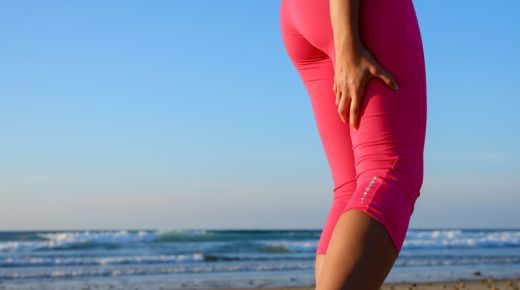By Rory Glynn
SmartHealthToday
They can stop athletes cold, everywhere from the Rio Olympics to NFL stadiums to your neighborhood field.
They’re muscle cramps – specifically, Exercise-Associated Muscle Cramps – and while you can and should take steps to avoid them, you can’t prevent them.
“No one can pinpoint exactly one reason for them,” said Kathy Boehmer, physical therapist and specialty program coordinator with St. Elizabeth Sports Medicine.
Boehmer said Dr. Michael Miller, medical director of St. Elizabeth Sports Medicine and team physician for Thomas More College’s football program, treated a multitude of cases of cramping in the Saints’ Sept. 3 opener at Franklin College.
“Certainly the early part of the (football) season, when it’s hot, heat is a contributing factor,” Boehmer said. “But it’s not the only factor.”

Exercise-Associated Muscle Cramps have been defined as “skeletal muscle cramps that occur during or shortly following exercise in healthy individuals with no underlying metabolic, neurological, or endocrine pathology,” according to the National Institutes of Health.
Boehmer calls it “a sudden, progressively painful contraction.” While there is no one culprit, she said a combination of factors can contribute to cramping – among them heat, fatigue and dehydration.
Of these, the most in the athlete’s control is ensuring proper hydration, and that means starting well in advance of competition.
“It’s what did you eat and drink yesterday,” Boehmer said. “You should start a good 24 hours out, and then hydrate throughout the day. By the time you’re cramping, it’s almost too late.”
The more elite your athletic level, the more important it is to replenish sodium and other electrolytes lost through sweat; you might consider a sports drink instead of plain water. Juices and sodas are not good choices to replenish fluids.
Though temperatures aren’t as high as in summer, it’s still a good idea to acclimate yourself to conditions before competition, Boehmer said. And that goes for more than heat. Running at high altitude, for example, is more difficult for those not accustomed to thinner air.
Finally, gentle stretching in movements that simulate your activity is a good idea. If you play tennis, for example, gentle lunges and cuts are a good warm-up, Boehmer said. “Walking through the motion gives the brain the feedback it needs,” she said.
If you do experience Exercise-Associated Muscle Cramps, Boehmer said, the first thing to do is stop activity and rest.
If heat is a factor, try to get into the shade to bring the body temperature down. Try stretching the muscle and gently massaging it.
Finally, try to take in fluids to rehydrate. In severe cases, sometimes fluids are given intravenously.
SmartHealthToday is a service of St. Elizabeth Healthcare.
















